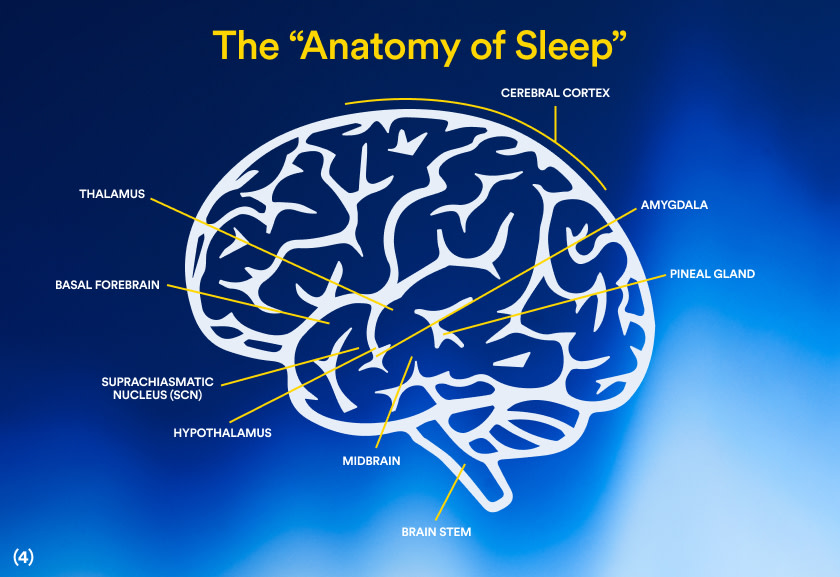Essential Takeaways
• Our bodies and overall body processes do most of the healing and repairing while we are asleep - this is why sleep is so important (and why some days we never want to get out of bed).
• Not having a good night’s sleep impacts our entire body, resulting in less than desired health outcomes such as stress on our vital sleep hormones like cortisol and melatonin.
When we think about sleep, a few questions and thoughts generally run through our brains (sometimes, ironically, at 2 AM when we should be soundly sleeping). Why do we need sleep? How does sleep benefit our health? What parts of the brain are involved in sleep, and how does it all really work, like scientifically?
The science of sleep might seem weird or complex, so we’re here to break it down for you and cut through a lot of the white noise. At Ritual, we value sleep as an essential pillar of health, not just a nice-to-have or bonus. In fact, we think it’s so important that we even formulated our own very own sleep supplement. Sleep BioSeries™ Melatonin is designed to be released in phases throughout the night to support falling asleep and staying asleep.* But in order to take even better care of your sleep habits, we’re here to pull back the sheets on how this elusive process actually functions.
Why Do We Need Sleep?
There is more to sleep than the hours we spend in bed. It’s about how we sleep, the quality we are getting, and the consistency of restful and rejuvenating slumbers.
While we sleep, our body is ramping up all functions of TLC. Meaning that during those blissful hours, our systems are cleansing, repairing, and preparing our bodies for continued healing. Certain body processes do most of their work while we are asleep; if we skimp on it or don’t strive for quality sleep, those systems are not able to fully do their jobs. The result of that is feeling groggy upon waking, being fatigued and sluggish during the height of the day, unable to concentrate and perhaps feeling irritable, having frequent cravings for sweet and/or salty foods. Not prioritizing sleep or beneficial sleep hygiene have both short and long term impacts on our health. To understand the science of sleep, we’ll first dive into the “anatomy of sleep”, what parts of the brain are involved and how this blissful ritual works.
Your Brain On Sleep: The Anatomy of a Good Night’s Rest
The anatomy of sleep is quite remarkable. While the act of sleeping might seem like a no-brainer, there are so many powerful and intricate players involved in getting the stars to align. Outside of just picking out the right firmness of the mattress, there are 9 parts of the brain that work synergistically in order to make sleep work. (4)












